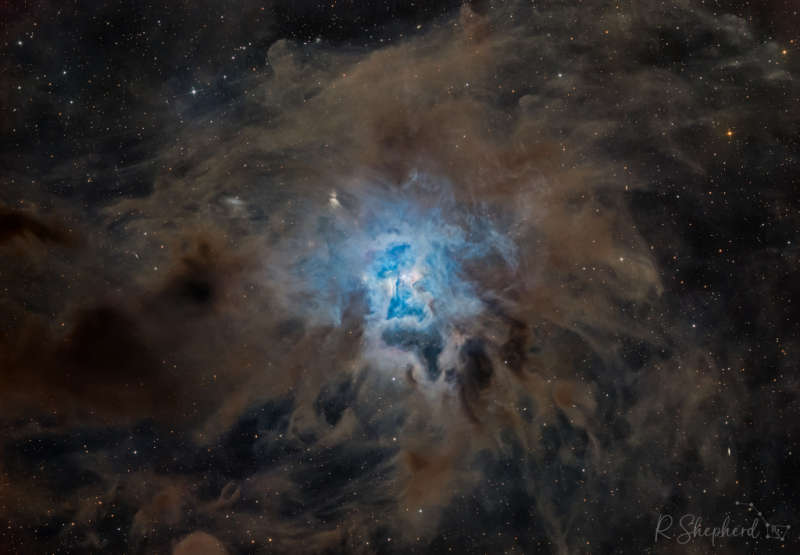
|
Credit & Copyright: Robert Shepherd
Explanation:
These cosmic clouds have blossomed 1,300 light-years away
in the fertile starfields of the
constellation Cepheus.
Called the Iris Nebula,
NGC
7023
is not the only nebula
to evoke the imagery of flowers.
Still, this
deep telescopic image
shows off the Iris Nebula's range of
colors and symmetries embedded in surrounding
fields of interstellar dust.
Within the Iris itself, dusty nebular material surrounds a hot, young star.
The dominant color of the brighter reflection nebula is blue,
characteristic of dust grains reflecting starlight.
Central filaments
of the reflection nebula glow with a faint reddish
photoluminescence as some dust grains
effectively
convert
the star's invisible ultraviolet radiation to visible red light.
Infrared
observations
indicate that this nebula contains complex carbon molecules known as
PAHs.
The dusty blue petals of the Iris Nebula span about six light-years.
|
January February March April May June July August September October November December |
| ||||||||||||||||||||||||||||||||||||||||||||||||
NASA Web Site Statements, Warnings, and Disclaimers
NASA Official: Jay Norris. Specific rights apply.
A service of: LHEA at NASA / GSFC
& Michigan Tech. U.
Based on Astronomy Picture
Of the Day
Publications with keywords: dust - reflection nebula - NGC 7023
Publications with words: dust - reflection nebula - NGC 7023
See also:
